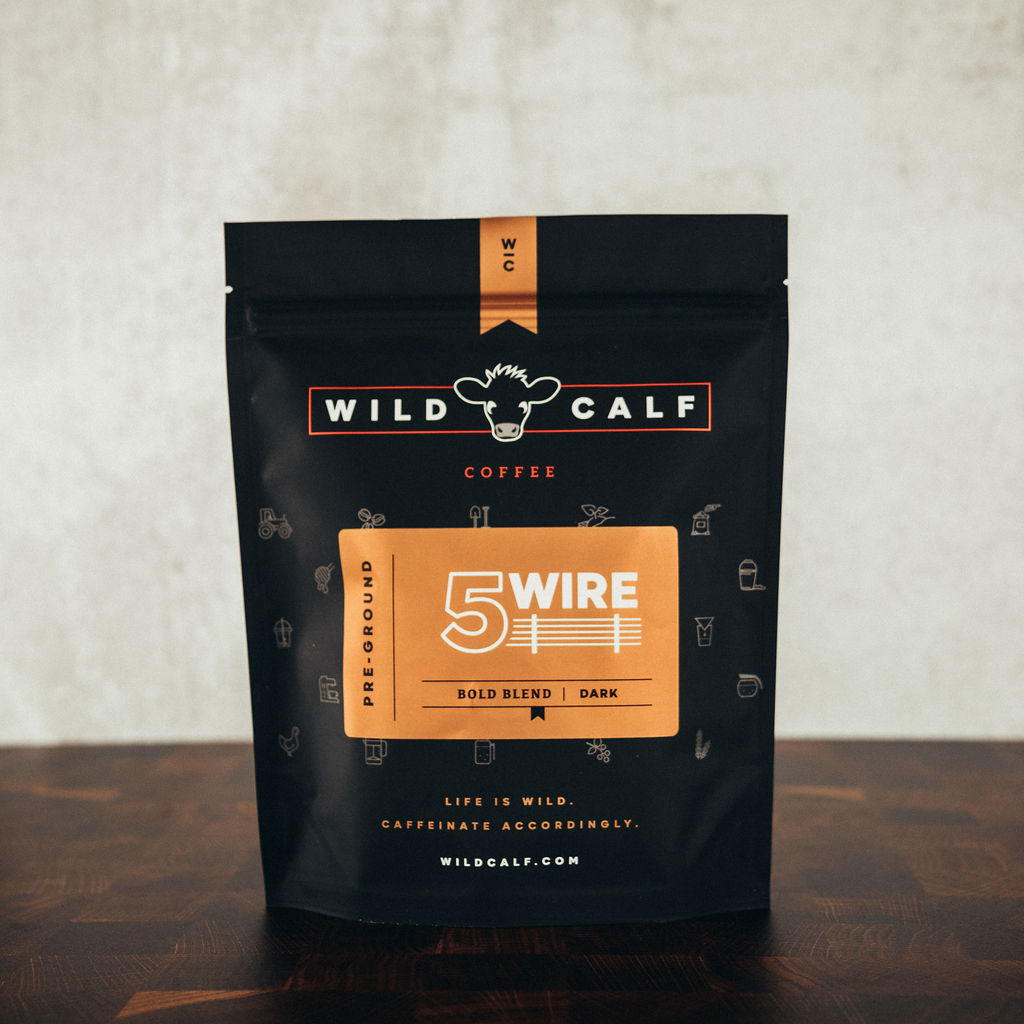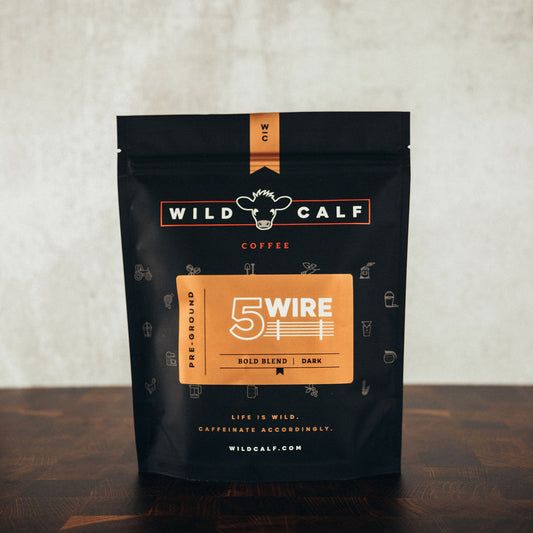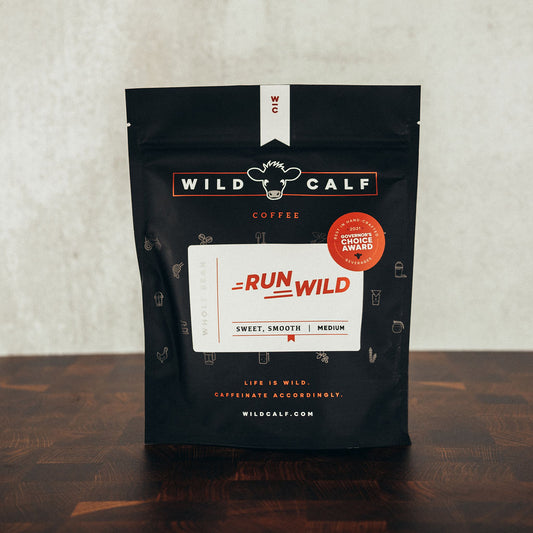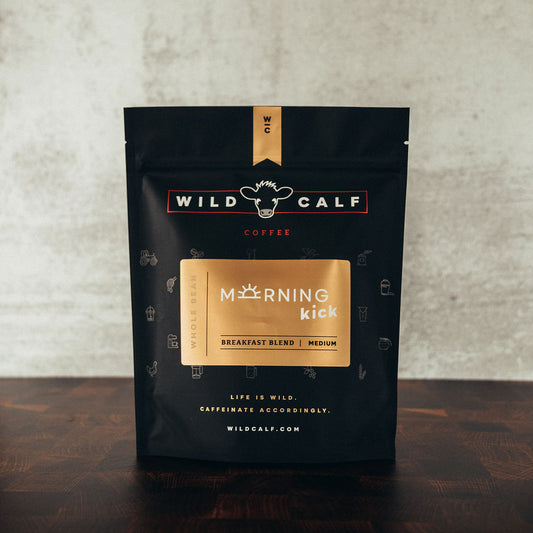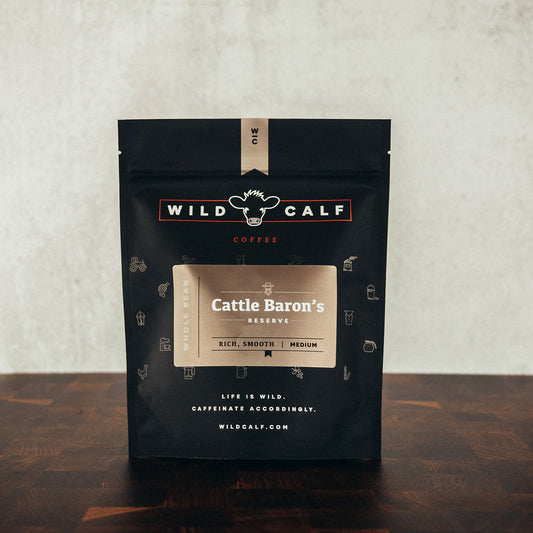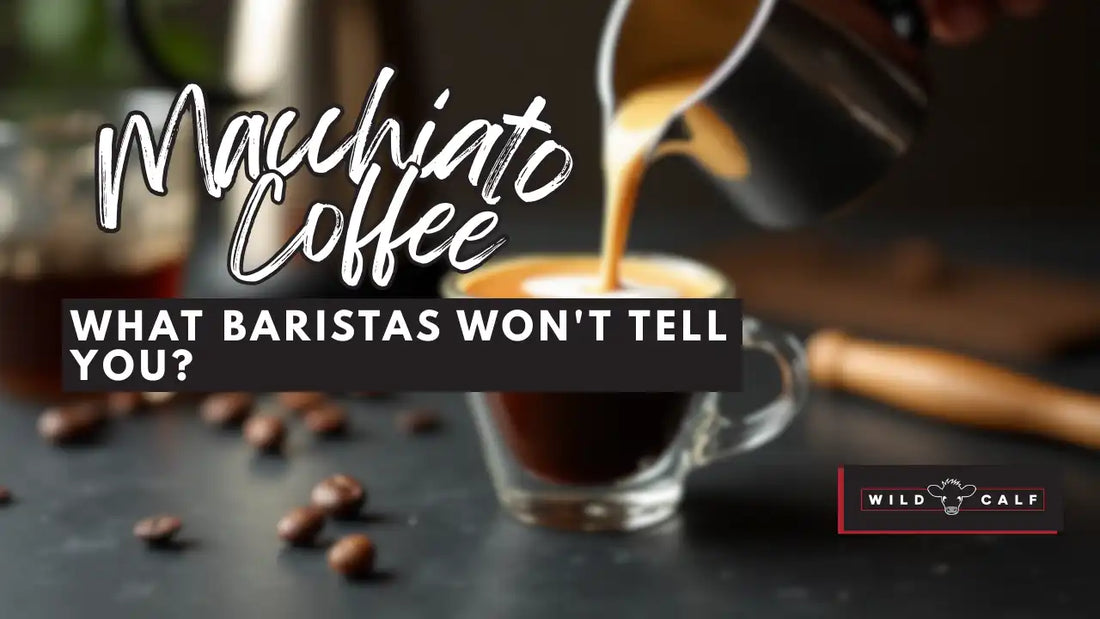
The Real Truth About Macchiato Coffee: What Baristas Won't Tell You
"macchiato coffee" means "stained" or "marked" in Italian. The sort of thing I love about this tiny drink is how it packs more personality than most people realize. A regular latte comes in a 16-ounce cup with 206 calories, while a traditional macchiato serves just 2 ounces with 13 calories.
Many coffee lovers would be surprised to know what a true macchiato really is. This drink stands apart from its larger, milkier relatives - the latte and cappuccino. A traditional macchiato blends a shot of espresso with a small splash of milk that creates one of the strongest espresso-based drinks available. This compact powerhouse emerged as an afternoon caffeine boost that sits between straight espresso and cappuccino in strength.
Let me share everything about macchiatos that most baristas keep to themselves in this piece - from its authentic Italian heritage to how it became one of the most misunderstood drinks on coffee shop menus.
The First time I met a "Macchiato"
My coffee experience took an unexpected turn on a rainy Seattle morning. A small, independent café caught my eye. It was hidden from the main streets, and I needed shelter from the rain. The place had fiddle leaf fig trees in the corners and comfortable leather club chairs that made you want to stay and chat.
A quick story from a local café
"I'll have a macchiato, please," I said casually. I expected the usual - a tall, sweet drink with caramel drizzle. James, the barista, gave me a friendly but slightly skeptical look.
"Just so you know, our macchiatos are traditional – very small, mostly espresso with just a touch of milk. Is that what you're looking for?" he asked.
His question surprised me. I almost changed my order, but curiosity won. "Actually, I'd love to try that," I replied.
James smiled and started working with impressive precision. He pulled a single shot of espresso into a tiny cup and reached for a small pitcher of frothed milk he had ready. I learned later that authentic Italian cafés always keep a pitcher of freshly frothed milk ready just for macchiatos because customers order them so often.
The drink looked nothing like what I expected. The cup was tiny – espresso-sized. The rich, dark brew had just a dollop of creamy milk foam on top. Dark espresso and white milk created a simple yet elegant contrast.
The intense flavor of espresso hit me first, softened by the milk. The foam mixed with the crema (the golden layer on top of espresso) and balanced its natural bitterness without watering down the coffee. My tiny macchiato disappeared after three more careful sips, but it changed how I understood this classic drink.
Why it stood out from other coffee drinks
The traditional macchiato stood out because of its perfect balance. It packed the bold intensity of espresso, but the small amount of milk made it approachable without losing its character.
James told me that macchiatos became popular in Italy as an afternoon coffee option. "In Italian coffee culture, cappuccinos were traditionally only consumed in the morning," he said. "The macchiato became the perfect middle ground – lighter than straight espresso but stronger than a cappuccino."
The story behind its name adds another interesting layer. "Macchiato" means "stained" or "marked" in Italian, which describes how white milk foam dots the dark espresso. Some coffee experts say the name started in the 1980s when baristas needed to tell the difference between plain espresso and those with a touch of milk. Others trace it back to the 1920s or 1930s in Italy.
This macchiato stood apart from other espresso drinks because of its ingredients' ratio. A true macchiato is:
- 96% espresso forward with just a small "stain" of milk
- Made to soften the espresso's intensity without diluting its character
- Served in a tiny cup that takes 3-4 sips to finish
- Stronger than a cappuccino but gentler than straight espresso
The world serves macchiatos differently, which creates confusion. Australian cafés serve a "Long Macchiato" with two espresso shots and a dash of milk. American coffee chains make versions with more milk and added flavors that barely look like the Italian original.
James helped me understand the differences between coffee drinks. "The macchiato fits perfectly between an espresso and a cappuccino," he explained. "You just need to find your sweet spot in the espresso-to-milk spectrum."
The taste opened my eyes – rich and intense, yet smooth around the edges. Unlike milk-heavy lattes or balanced cappuccinos, this macchiato let coffee shine while milk played backup.
I've become quite passionate about macchiatos since that morning. This tiny drink packs such a bold personality and rich history in every sip. My first real macchiato taught me that small coffees can leave the biggest impressions.
What is a Macchiato, really?

My visits to coffee shops worldwide have taught me something interesting - people often misunderstand the macchiato. This small but powerful drink deserves more recognition than just being another option on a coffeehouse menu.
The meaning behind the name
The macchiato's story begins with its name. In Italian, "macchiato" means "stained" or "marked". Picture a barista pulling a shot of rich, dark espresso and adding just a dollop of milk to "stain" the coffee's surface. This creates that signature two-tone look that makes it unique.
The reason for "marking" a perfect espresso has an interesting backstory. Italian cafés in the 1980s needed a quick way to help servers tell the difference between plain espresso and one with a hint of milk. They called the milk-touched version "marked" or "stained" – and that's how caffè macchiato came to be.
This origin story shows something essential about Italian coffee culture - details matter. Each tiny variation deserves its own name and specific preparation method. The macchiato didn't just appear by chance. It came from baristas needing to tell similar drinks apart during busy service hours.
Portuguese coffee lovers have their own version called "café pingado," which means "coffee with a drop of milk". This shows how the idea of barely-milked espresso appeals to different coffee cultures.
What makes a macchiato different from other espresso drinks
A well-made macchiato stands out by its size. You'll get just 1¼ ounces (37 ml), making it one of the most concentrated coffee drinks you can buy.
The magic lies in its high ratio of espresso to milk. Let's look at some comparisons:
- Macchiato: 4:1 to 9:1 coffee-to-milk ratio – mostly espresso with just a "stain" of milk
- Cappuccino: Equal parts espresso, steamed milk, and foam
- Latte: Mostly milk with a shot or two of espresso
No other coffee drink matches the macchiato's high espresso-to-milk ratio. The milk takes the edge off without hiding the bold espresso flavor. You get the perfect middle ground between pure espresso's intensity and milk-based drinks' smoothness.
The caffeine content tells the story too. On a strength scale, the macchiato sits near the top, packing 85 mg of caffeine in a 2-ounce serving.
The milk's role makes this drink special. Lattes and cappuccinos let milk change the drink's character. The macchiato uses milk just to add sweetness and smooth out the espresso's bite without masking its personality.
People sometimes get confused because two drinks share the macchiato name:
- Espresso macchiato (the traditional version): An espresso shot topped with 1-2 teaspoons of milk or foam, served in a small cup
- Latte macchiato: A layered, sweeter drink where espresso meets steamed milk, creating distinct layers with foam on top, served in a tall glass
Coffee chains have created their own takes too. Starbucks brought us the caramel macchiato in the 1990s, though it's quite different from the Italian original.
The next time you order a macchiato, you're asking for an espresso with just a touch of milk - a simple idea that lets quality espresso's complex flavors shine through.
Types of Macchiato you might see

You might be surprised by the many variations of "macchiato" on café menus. My travels have helped me find several distinct styles of this coffee drink. Each style has its own preparation method and unique flavor profile.
Espresso Macchiato (Italian classic)
The traditional espresso macchiato represents the purest form of this coffee drink from Italy. Italians use macchiato specifically to mean espresso macchiato – a single or double shot of espresso "stained" with a small amount of milk foam.
The drink looks stunning. A rich, dark espresso sits below a delicate dollop of milk foam. The milk creates a small, white spot on the surface without mixing into the coffee. This classic version keeps the espresso's bold character. The milk just adds a gentle touch to soften the bitterness.
The magic lies in its ratio – about 96% espresso forward. The foam meets the crema (that golden layer on top of espresso) and balances its natural bitterness. The coffee stays undiluted. You can enjoy this tiny treat in three or four sips while savoring its intense flavor.
Latte Macchiato (layered and milky)
The latte macchiato completely changes the ratio. The espresso stains the milk instead of milk staining the espresso. This drink comes in a tall glass with three beautiful layers: hot milk at the bottom, espresso in the middle, and frothy milk foam on top.
Baristas pour steamed milk first, then carefully add a shot of espresso. This creates those stunning, Instagram-worthy layers. The result tastes sweet and creamy with a gentle coffee kick – perfect if you prefer milder coffee.
Caramel Macchiato (the sweet twist)
That caramel-drizzled drink at your favorite coffee chain tastes nothing like the tiny Italian version. The caramel macchiato has become a modern American adaptation that coffee lovers adore.
This sweet version combines vanilla-flavored syrup, steamed milk, espresso, and caramel sauce drizzled on top. Starbucks serves it in larger cups, and it has become one of their most popular drinks.
The drink keeps the macchiato name but follows a different preparation method. Baristas pour espresso on top of the milk unlike the traditional Italian way. The result? A sweet, dessert-like coffee experience that stands apart from its Italian ancestor.
Short vs. Long Macchiato
Australian coffee shops often use terms like "short macchiato" and "long macchiato." The main difference lies in the amount of espresso:
- A short macchiato uses a single shot (30ml) of espresso with a teaspoon of steamed milk and foam
- A long macchiato needs a double shot (60ml) of espresso with the same small amount of milk and foam
Each version comes in its own glass size. Short macchiatos need a 90ml glass, while long macchiatos use a 220ml glass. The terms "short" or "long" just describe the coffee quantity, not the milk amount.
The macchiato stands as one of coffee's most versatile drinks. You can choose anything from the bold Italian classic to sweet modern versions that coffee lovers worldwide enjoy.
Macchiato vs. Latte vs. Cappuccino

Have you ever stared at a coffee menu wondering what sets one espresso drink apart from another? The differences between macchiato, latte, and cappuccino might seem subtle at first glance. Each of these drinks offers a unique coffee experience.
How they look and taste
These drinks show striking visual contrasts. A traditional macchiato comes in a tiny espresso cup with dark espresso and just a small "stain" of white milk on top. Coffee enthusiasts quickly recognize this distinctive two-tone appearance.
A cappuccino fills a 6oz cup with equal parts espresso, steamed milk, and thick, creamy foam. This creates a balanced, velvety texture with a moderately strong coffee flavor. Many coffee lovers find the luxurious mouthfeel of the foam irresistible.
A latte needs a much larger vessel - usually 10-12oz. It starts with the same espresso base but uses substantially more steamed milk with just a thin foam layer on top. The result is a noticeably milder, creamier coffee taste.
The ratios make these drinks truly distinct:
| Drink | Espresso-to-Milk Ratio | Taste Profile | Size |
| Macchiato | 4:1 to 9:1 (mostly espresso) | Bold, intense | 2-3 oz |
| Cappuccino | 1:1:1 (equal parts) | Balanced | 5-6 oz |
| Latte | 1:3 or more (milk-forward) | Mild, creamy | 8-12 oz |
Macchiato delivers that robust coffee flavor with just enough milk to soften the edges. The cappuccino strikes perfect harmony between milk and coffee, while the latte welcomes creaminess above all.
Which one has more caffeine?
Despite their taste differences, cappuccinos and lattes contain similar caffeine content when ordered in the same size. A 16oz cappuccino and a 16oz latte both pack approximately 173mg of caffeine.
The macchiato, being much smaller, has less total caffeine - about 85mg in a standard 2oz serving. All the same, ounce for ounce, the macchiato delivers the biggest caffeine punch due to its concentrated nature.
Note that these caffeine levels assume each drink starts with the same base - typically a single or double shot of espresso. The differences come from dilution with milk, not from the coffee itself.
Which one is best for you?
Your perfect choice depends on your coffee priorities:
Bold, intense flavors catch your attention? The macchiato could be your ideal match. Its minimal milk content lets the espresso shine while taking just enough edge off the bitterness. It works great for midday when you want a quick caffeine boost without filling up.
Balance appeals to you? The cappuccino provides the most harmonious coffee experience - enough milk creates creaminess without overwhelming the espresso notes. Many coffee purists call it the perfect morning kick drink.
Gentle coffee flavors suit your taste? The latte stands supreme. Its higher milk content creates a smooth, approachable drink that serves as a beautiful canvas for flavor additions. It also offers a more filling option with its larger volume.
Your choice might depend on dietary considerations too. Different milk quantities mean a macchiato contains only about 13 calories, nowhere near a cappuccino's 130 calories and a latte's 206 calories in standard servings.
These differences help you get exactly the coffee experience you're craving!
How to order the macchiato you actually want
Ordering a macchiato coffee feels like taking a foreign language test. You confidently ask for your drink one moment, and the next you're staring at something totally unexpected. Here's how to crack this coffee code!
What to say at a café?
A traditional Italian-style macchiato is easy to order. Just ask for an "espresso macchiato" or "traditional macchiato." These specific words tell your barista you want that authentic experience—a shot of espresso topped with a dollop of foam.
Starbucks and similar chains need more precise instructions. Their menu has both traditional and their own sweeter versions. The best way to order is simple:
"I'd like an espresso macchiato, traditional style—just espresso with a touch of foam."
This helps avoid getting their caramel macchiato, which is basically a vanilla latte with caramel drizzle.
Avoiding common mix-ups
The biggest confusion comes from the difference between traditional macchiatos and chain-store versions. In fact, baristas often see customers who expect the Starbucks caramel variety look disappointed when they get the tiny traditional version.
The sweet Starbucks-style drink you crave at an independent café needs a different approach. Try "a vanilla latte with whipped cream and caramel drizzle on top". Most baristas know exactly what you want.
Many coffee shops now ask "Would you prefer a traditional macchiato or something more like a Starbucks macchiato?" This simple question prevents disappointment for everyone.
Fun fact: Why your macchiato might look different in Australia?
Australia's macchiato world is even more diverse! The locals call it a "mac" and serve several unique variations:
- Perth locals love their "long mac topped up"—a double-shot with the glass filled with textured milk
- Melbourne's unique version combines a double-shot, glass half-filled with water, and a dash of textured milk
- A traditional "short macchiato" uses a 30ml espresso shot with just a teaspoon of steamed milk
Your next trip down under might lead you to discover your new favorite coffee variation!
How to make Espresso Macchiato at Home

Making a perfect espresso macchiato at home is easier than you might think. A few pieces of equipment and some practice will help you enjoy this Italian classic right from your kitchen. Want to become your own barista?
What you'll need (beans, milk, tools)
Here are the essentials you need:
- Espresso machine with a steam wand (the heart of your setup)
- Milk jug (preferably stainless steel, 12oz works well)
- Thermometer to monitor milk temperature
- Espresso beans - a blend of Arabica and Robusta creates the perfect balance of flavor and crema
- Fresh, cold milk - whole milk froths best, though 2% works too
- Demitasse cup (small espresso cup, about 3-4oz)
Your espresso's rich flavor stays intact when you preheat the cup. A cold cup can quickly turn your espresso bitter.
Step-by-step guide for beginners
- Preheat your cup - Fill it with hot water to warm it up
- Grind coffee beans freshly before brewing - use a burr grinder to create uniform particles
- Tamp the grounds into an even disk with light pressure
- Prepare espresso - Pull a single shot (about 1oz) or double shot based on your preference
- Heat the milk until steam rises (but don't let it boil!)
- Froth the milk using your machine's steam wand or a handheld frother
- Pour just the foam - The milk separates into two layers after frothing; scoop only the top foam layer
- Add one to two teaspoons of milk foam to your espresso's center
- Serve immediately - A perfect macchiato won't wait!
Tips to get the milk just right
The milk foam makes an authentic macchiato special. Cold milk works best because it incorporates air more effectively. Your wand needs a quick purge to remove water before you begin.
The sweet spot lies just below the milk's surface. Listen for a "chirping" sound that tells you you're in the right position. Deeper placement prevents proper aeration, while a shallow position creates large bubbles and mess.
Stop steaming when your thermometer shows 140°F (60°C). Milk proteins won't foam properly beyond this temperature.
A traditional macchiato needs just enough foam to "stain" the espresso. Many baristas prefer a 12oz pitcher even for small amounts because it offers better control.
The final step? A firm tap of your milk jug's base against the counter breaks surface bubbles before pouring. This technique creates that signature velvety microfoam your macchiato deserves.
Conclusion
My experience with macchiato coffee has shown that this tiny drink packs more character and charm than its size suggests. Coffee lovers can taste decades of Italian coffee culture and craftsmanship in each sip of a properly made macchiato.
Note that a true macchiato stands apart from regular coffee drinks. This exceptional beverage bridges the gap between bold espresso and creamy milk-based drinks. The traditional Italian version with its gentle "stain" of milk and modern interpretations both offer something special for every coffee enthusiast.
Creating the perfect macchiato at home requires practice, but becoming skilled at this craft brings great satisfaction. Quality beans, proper milk temperature, and the right technique are essential. You'll soon create café-quality macchiatos in your kitchen.
Want to lift your coffee game? Wild Calf Coffee provides premium beans that are perfect for authentic macchiatos. Fresh roasted coffee can be delivered to your door with a simple subscription.
The next time you visit a coffee shop, order a traditional macchiato confidently. Rich aromas will fill your senses as you savor the perfect balance of espresso and milk. This modest drink has captured coffee lovers' hearts for generations, and it's easy to understand why.
FAQs
Q1. What's the difference between a traditional macchiato and a Starbucks macchiato?
A traditional macchiato is a small espresso drink with a dollop of milk foam, while a Starbucks macchiato is typically larger, sweeter, and contains flavored syrups and more milk.
Q2. How do I order a macchiato to ensure I get the traditional version?
Ask for an "espresso macchiato" or "traditional macchiato" and specify that you want just espresso with a small amount of milk foam on top.
Q3. Why is a macchiato served in such a small cup?
The macchiato is designed to be a concentrated coffee experience, typically served in a 2-3 oz cup to maintain the perfect ratio of espresso to milk foam.
Q4. How does the caffeine content in a macchiato compare to other espresso drinks?
Ounce for ounce, a macchiato has the highest caffeine concentration due to its high espresso-to-milk ratio, though its small size means less total caffeine than larger drinks.
Q5. Can I make a traditional macchiato at home?
Yes, you can make a macchiato at home with an espresso machine, fresh espresso beans, and a small amount of frothed milk. The key is to use just a dollop of foam to "mark" the espresso.
